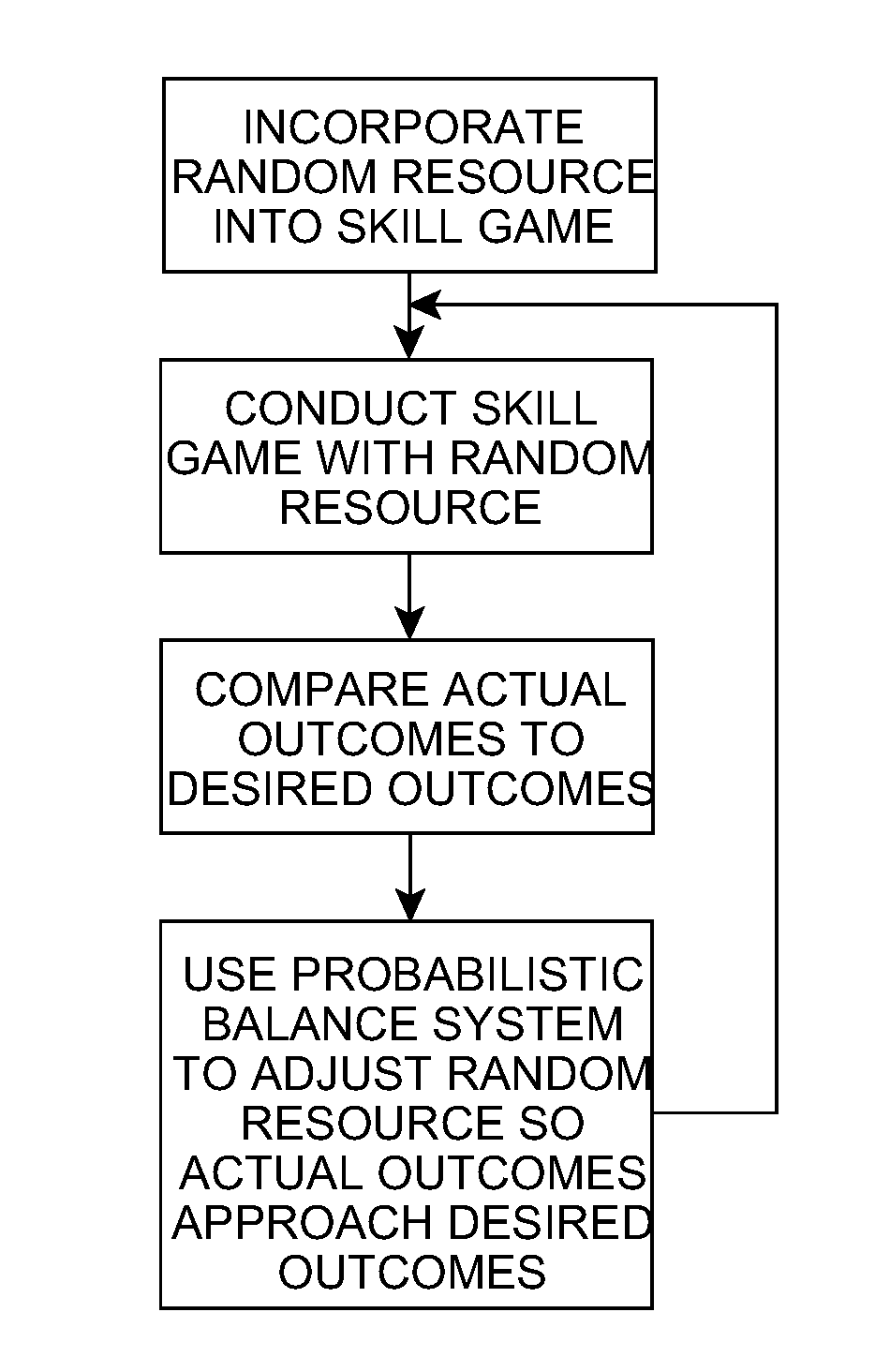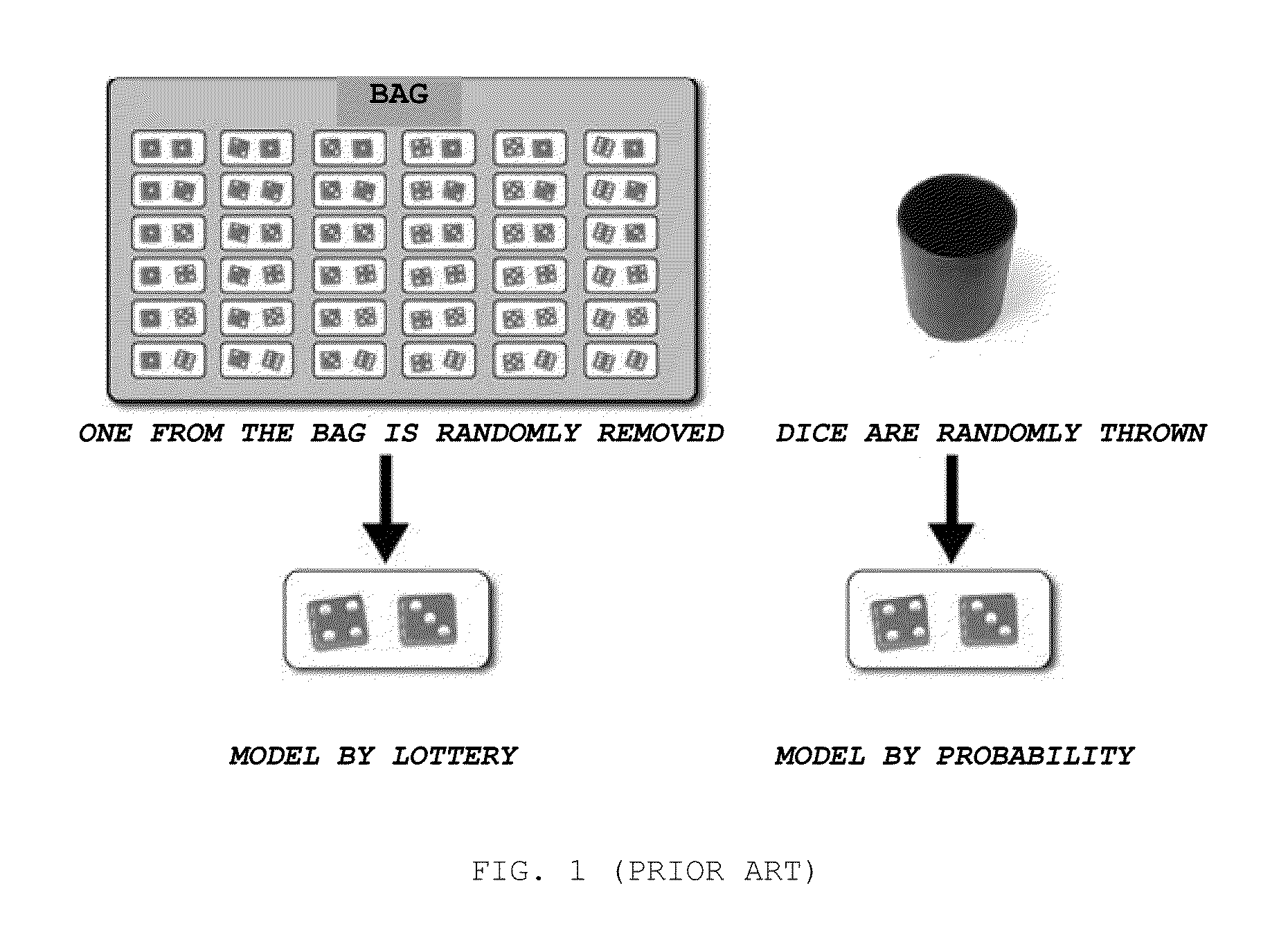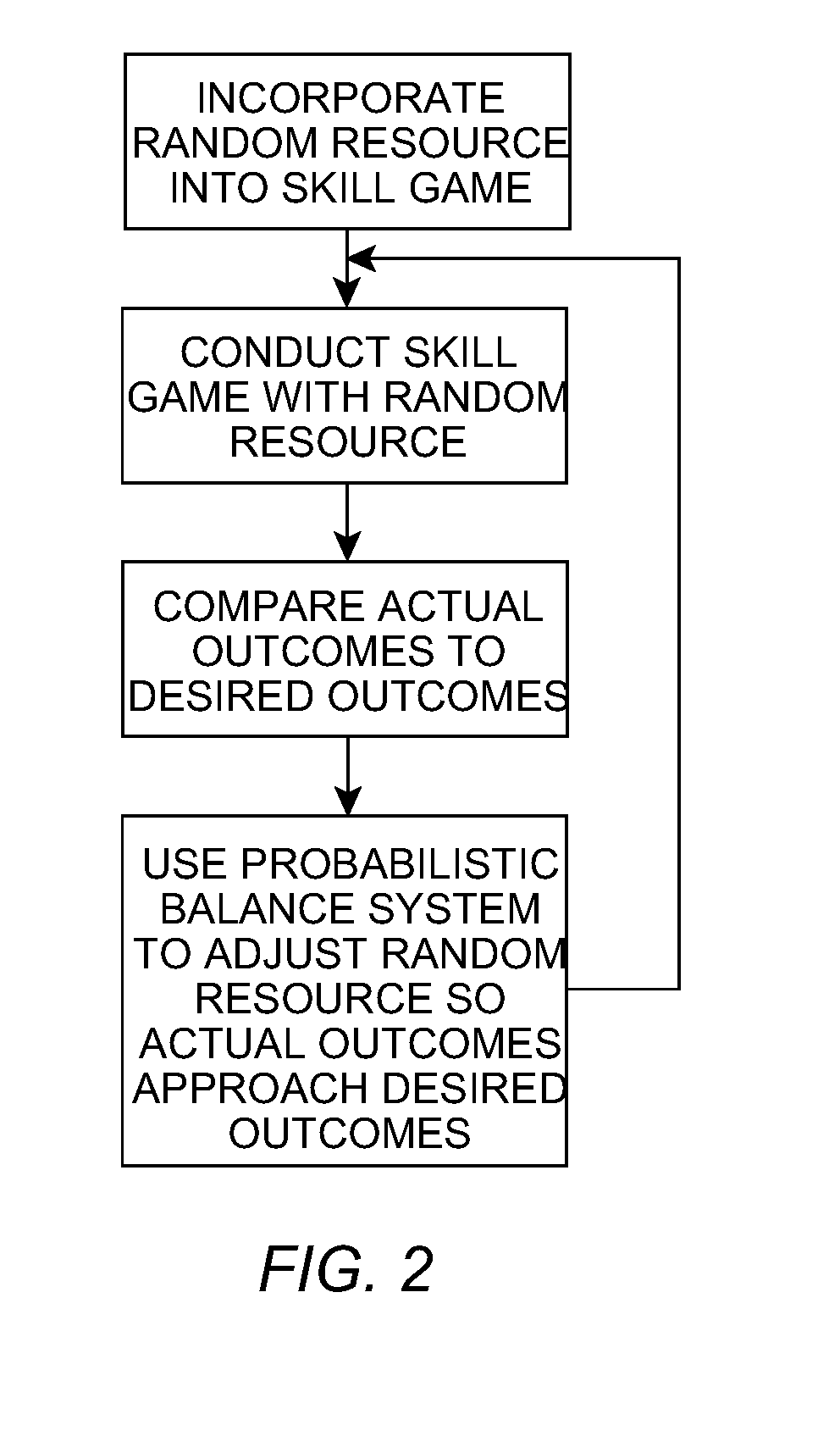System for Incorporating Chance Into Interactive Games Requiring the Application of Intellectual or Motor Skills
a technology of chance and interactive games, applied in the field of digital interactive games, can solve the problems of boredom of the player and his/her loss of interest, games that do not show any intellectual or motor challenges to the player, and the experience offered by this type of system is highly repetitiv
- Summary
- Abstract
- Description
- Claims
- Application Information
AI Technical Summary
Benefits of technology
Problems solved by technology
Method used
Image
Examples
application examples
Example 1
Without PBS
[0149]If we have three levels of difficulty A, B and C, wherein A is the easy level, B is one of the intermediate levels, and C is the impossible level, a player J who is sitting in a terminal will receive by draw one of three levels of difficulty.
[0150]Then, the player places his bet and the game draws the levels of difficulty. The drawn level is shown to the player who gives his / her answer, which is evaluated by the system.
[0151]If the answer is correct, the game performs again the draw for the levels of difficulty, get one and shows it again to the player, and so on.
[0152]If the answer is wrong, the game proceeds exactly in the same way. It makes again the draw of levels of difficulty. Obtaining an easy, intermediate or difficult level by the player is completely by chance and the prize depends on the performance.
Example 2
With PBS
[0153]The player sits down to play and the system defines a starting Proportional distribution of levels of difficulty (PDLD), relat...
example 1
Trivia
[0207]As it is well-known, Trivia is a game of questions and answers that relate to a specific subject or topic, or general culture matters.
[0208]There are many versions of this kind of games, from traditional board games (Trivial Pursuit, Carrera de Mente, etc.) to versions in mass media (Who Wants to Be a Millionaire?, Odol Pregunta, Jeopardy, etc.).
[0209]Possible Implementation
[0210]A possible implementation is to design a database of questions and answers of multiple-choice type, associated with a level of difficulty between 1 and 10, where 1 is very easy and 10 is virtually impossible to solve.
[0211]One mode can be implemented to perform ten consecutive questions where the player can choose, after answering each one, if he keeps playing or withdraws.
[0212]If the player answers a question incorrectly (or do not respond within predetermined 30 seconds), the player loses.
[0213]When the game starts, the player makes his / her bet (which can be fixed or variable) and the first q...
example 2
Memory Test
[0220]As it is known, the memory test is a set of chips, all of them with the same back and with different images on the front. Normally the front images are repeated in pairs.
[0221]The game starts with all the chips face down and the player must turn up pairs of chips. If the chips have the same front, they are removed, if not, the player should leave them upside down as he / she found them.
[0222]Usually two or more players play the game taking turns to choose the chips. The game ends when there are no more chips face down and the player who removed more pairs wins.
[0223]Possible Implementation
[0224]The game can be implemented for a player to play alone against the computer and can be finished when there are no more chips (traditional version) or after a certain amount of moves.
[0225]In the first case, it would be paid for the amount of moves (the smaller the number, the more it is paid), in the second case, it could be paid for number of pairs found.
[0226]The level of dif...
PUM
 Login to View More
Login to View More Abstract
Description
Claims
Application Information
 Login to View More
Login to View More - R&D
- Intellectual Property
- Life Sciences
- Materials
- Tech Scout
- Unparalleled Data Quality
- Higher Quality Content
- 60% Fewer Hallucinations
Browse by: Latest US Patents, China's latest patents, Technical Efficacy Thesaurus, Application Domain, Technology Topic, Popular Technical Reports.
© 2025 PatSnap. All rights reserved.Legal|Privacy policy|Modern Slavery Act Transparency Statement|Sitemap|About US| Contact US: help@patsnap.com



